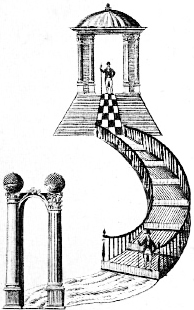The Seven Liberal Arts
Elias Rubenstein
The knowledge of seven disciplines is substantial for the higher understanding of art. In mystery tradition, these are regarded as the “liberal” arts and are generally depicted as a seven-step ladder. These include grammar, rhetoric, logic, arithmetic, geometry, music and astronomy. This list illustrates the spiritual and moral framework, which is vital for an artisan to be taken seriously. This is the reason why we find artisans in antiquity, who rank among the polymaths. In many cases, they received the spiritual framework in the mystery schools at that time. In this context and in particular, art is understood as the refinement of the human personality. Immature man resembles a rough stone, which is hewn to a complete cube by the skill of art.
Just as Michelangelo merely uncovered the redundant marble from the marble block around David, and thus, created a most imposing and shapely statue, so does the true artist utilize the starting basis to release something that already exists. For the artisan, craft skills are as essential as spiritual ones. The seven arts are like a ladder for the artist, to fathom the order of creation step by step, and to establish both a lively and profound relationship with the great master-builder of all worlds. It behooves such an artist to design, for the glory of God, those art works, which are revealed to him by God.


The term “Hermeticism” comes from the name “Hermes.” In Greek mythology, Hermes is the intermediary between mind and matter. Hermeticism holds methods for unfolding spiritual abilities in order to understand the meaning of existence, to become connected with the spiritual light, and to build an inner, permanent relationship with the Creator of the All.
The Hermetic wisdom tradition has kept proven tools for the spiritual unfolding of mankind for thousands of years. It also holds verifiable answers to the most important, fundamental questions in life.